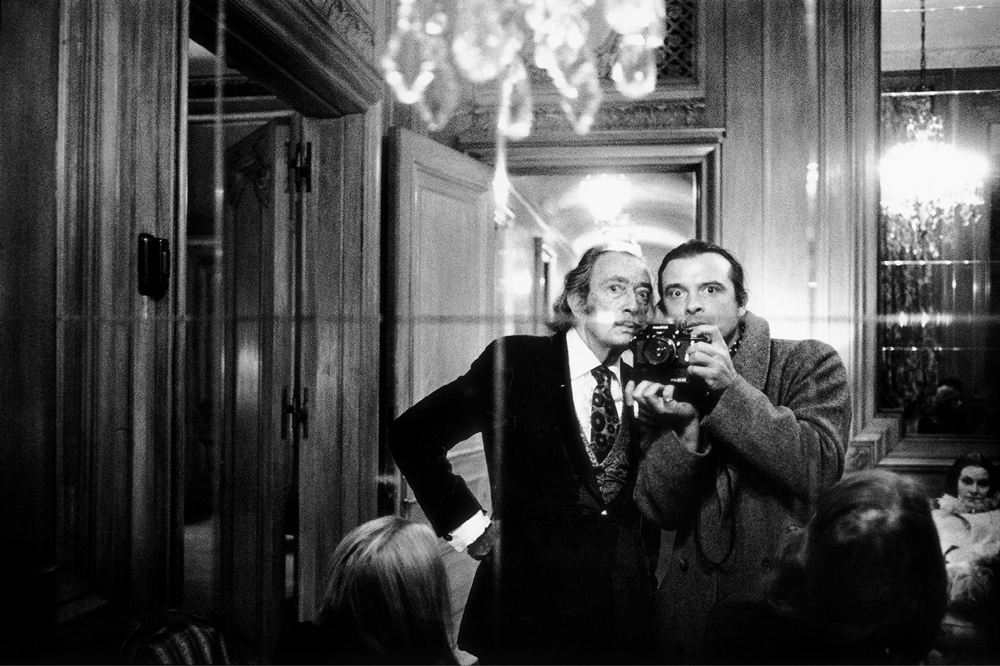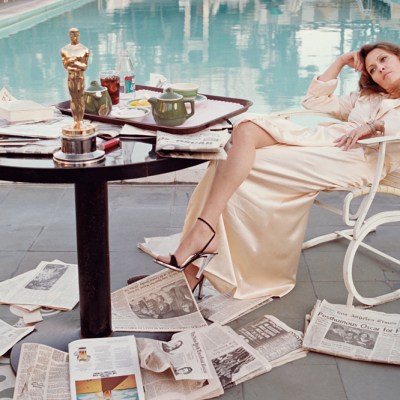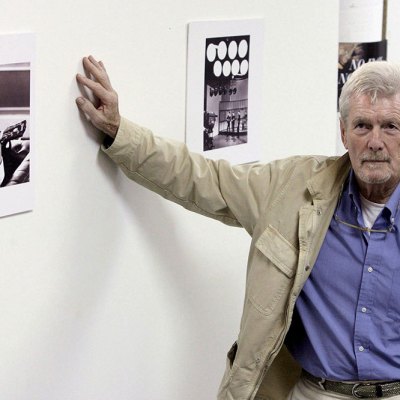The Sixties, David Bailey tells us in his new autobiography, were over by about 1965. The calendars might assert otherwise. But it has a ring of truth, at least when it comes to the sharp-tailored, monochrome, mod version of the ’60s, the era of Swinging London. Bailey ought to know, after all. He modestly claims to have invented the decade.
His journey to New York with the model Jean Shrimpton for a Vogue shoot in 1962 has taken on some of the legendary qualities of Lenin’s arrival at the Finland Station: a moment that ushered in a revolution. It is possible to overstate how innovative his technique was – Vogue exists to chronicle trends, rarely to set them – but its impact was epochal. Beforehand, the magazine’s pages had been dominated by stagey shoots in which haughty models struck stock poses such as ‘catching a butterfly’ and ‘hailing a cab’. By contrast, Bailey’s photos of Shrimpton showed her in naturalistic settings on grainy 35mm film. They aligned Vogue with a new spirit at large in the culture – in the guerrilla shooting style of the French Nouvelle Vague film-makers; in the grittiness of Kitchen Sink realism; and above all in the ‘Young Idea’, a nebulous term that was to come of age in a decade defined by youth. The clothes were almost incidental. It was, as he affirms more than once in this book, all about the girl.
‘Me and Jean’, 1971, David Bailey. Photo: © David Bailey; courtesy Macmillan

Bailey approached fashion photography as a form of portraiture, while his portraits delineated the fashionable. Many of these people were his friends (Mick Jagger, Terence Stamp, Michael Caine), many others his lovers (Shrimpton, Catherine Deneuve, Penelope Tree), all shot in his distinctive, high-contrast style against a plain white background. (This was not, he is at pains to point out, cribbed from Richard Avedon, but was developed by his mentor John French to achieve greater impact on Daily Express newsprint.) Raw, unfiltered, the images spoke of his instinctive rapport with his subjects, of connections forged by his earthy, rakish charm.
Penelope Tree as Mickey Mouse (1970), David Bailey. Photo: © David Bailey; courtesy Macmillan

Closer to a memoir than an autobiography, Look Again is a curious affair. It, too, is raw and unfiltered. The sentences are staccato. The style is coarse and demotic. The structure is something of a stream of consciousness, as if we are sitting with Bailey and listening to his recollections. This is unsurprising, since the photographer is dyslexic and put the book together with the help of the art historian James Fox, described here not as a ghostwriter but as his ‘collaborator’. Like a set of bulldog clips used by a fashion stylist to improve the fit of a garment, Fox has the unenviable task of imposing some kind of form on Bailey’s shapeless reminiscences, remaining invisible all the while.
Look Again is at its most evocative when dealing with Bailey’s childhood in the 1940s. There is a strong sense of place, and an eye for a telling detail: the bombed-out buildings with their insides on display like dolls’ houses; the cold front room with plastic-covered furniture reserved for special visitors; the casual brutality of East End life. (His father, a tailor’s pattern-cutter, was scarred for life when a young thug slashed him across the face. The identity of the assailant was kept from Bailey for several decades, but it was the gangster Reginald Kray – whose wedding photographs he took in 1965.) Much the same can be said of his period stationed in what was then Malaya on national service with the RAF; while the rest of the barrack room was adorned with saucy pin-ups, a Picasso poster hung over Aircraftman Bailey’s bunk. He credits one of the artist’s portraits of Jacqueline Roque with making him appreciate that rules existed to be broken.
‘Self portrait in Singapore during National Service on a delayed action camera’, 1956, David Bailey. Photo: © David Bailey; courtesy Macmillan

The Sixties, understandably, take up the lion’s share of the book, but here Bailey’s digressive narrative style works against him. The pages are rich with anecdotes – about teaching the ballet dancer Rudolf Nureyev to do the twist, of being pulled over by the police with a python in the boot of his Rolls-Royce – some of which will already be familiar to aficionados of the man and his work. But somewhere along the way the sense of place, and worse still, of the times, dissipates. The book takes on an almost picaresque feel, a hazy sequence of incidents in which our hero, like a male Moll Flanders or the protagonist of a Fielding novel, ricochets from lover to lover. We are bounced from Shrimpton to Deneuve (whom he married for a bet) to Tree to Marie Helvin to, ultimately, Catherine Dyer, his wife since 1986. Fox has persuaded all of them to contribute to Look Again, in sections of transcribed dialogue like a theatrical script. Their memories of events do not always accord with Bailey’s own.
In a sense, this lurching narrative comes back to the question of when the Sixties ended. There is a dilemma faced by many figures who came to prominence during that youth-obsessed decade: their early achievements overshadow the rest of their lives, their talent congeals into mere celebrity. By 1965 Bailey was undoubtedly a celebrity. The main character in Antonioni’s Blow-Up was famously modelled on him, although Bailey bemoans his fictional counterpart’s manic ‘Yeah, baby!’ mannerisms – more appropriate, he says, to a Chelsea studio photographer. (‘He was so square, David Hemmings. It would have been better to have Terence Stamp.’) The subsequent decades feel a little as if he is casting about for a new purpose. For all that he sometimes maintains that his heyday is the present, it is not clear that Bailey has quite achieved this. He putters through some of his greatest hits – official photographer at Live Aid in 1985, a memorable anti-fur advert in which a model’s coat drags blood across the catwalk, a series of comical television adverts for Olympus cameras – but the sense of drive from earlier chapters has gone.
‘The Krays for the Sunday Times’, 1965, David Bailey. Photo: © David Bailey; courtesy Macmillan

In its rawness and lack of polish, its insistence that it’s ‘all about the girl’, Look Again effortlessly evokes the man and his work. It is regrettable, then, that in places it suffers from something that his pin-sharp photography never did – a strange lack of focus.
Look Again by David Bailey is published by Macmillan.



